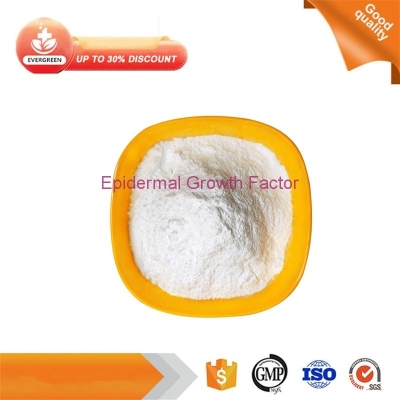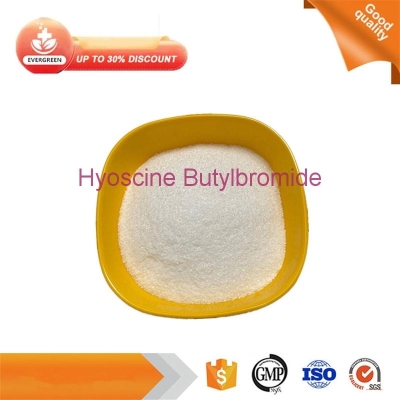-
Categories
-
Pharmaceutical Intermediates
-
Active Pharmaceutical Ingredients
-
Food Additives
- Industrial Coatings
- Agrochemicals
- Dyes and Pigments
- Surfactant
- Flavors and Fragrances
- Chemical Reagents
- Catalyst and Auxiliary
- Natural Products
- Inorganic Chemistry
-
Organic Chemistry
-
Biochemical Engineering
- Analytical Chemistry
- Cosmetic Ingredient
-
Pharmaceutical Intermediates
Promotion
ECHEMI Mall
Wholesale
Weekly Price
Exhibition
News
-
Trade Service
It is only for medical professionals to read for reference.
Listening to your words is better than ten years of medicine
.
Exquisite explanation, divine enlightenment, famous doctor Kung Fu tea, handed over to millions of doctors! The 9th Asian Crohn’s Disease and Colitis Organization Annual Conference (AOCC 2021) will be held in Guangzhou, Yangcheng on October 14-16, 2021.
The theme is "Breaking the Boundaries for Asian Inflammatory Bowel Disease"
.
The "medical community" specially invited Professor Li Yue from Peking Union Medical College Hospital, Professor He Yao from the First Affiliated Hospital of Sun Yat-sen University, and Professor Zhong Jie from Ruijin Hospital Affiliated to Shanghai Jiao Tong University School of Medicine to join the AOCC 2021 Interview Room of "Famous Doctor Kung Fu Tea".
To exchange and share many hot topics in the application of biological agents in the diagnosis and treatment of inflammatory bowel disease (IBD)
.
Professor Li Yue: Reasonable therapeutic drug monitoring is important for guiding the use of IBD biological agents.
Interview video host: Therapeutic drug monitoring (TDM) has always been a hot research topic in IBD treatment.
What is the significance of reasonable TDM for IBD treatment? Professor Li Yue: The treatment of IBD has undergone tremendous changes in the past half a century.
It has progressed from the initial mesalazine treatment to the application of glucocorticoids and immunosuppressants, and then to the current new era of biological agents, with a variety of different targets.
Targeted biological agents have become a powerful weapon for clinicians to treat IBD
.
When using better and stronger drugs to treat IBD, we also hope to maximize the effects of the therapeutic drugs, and TDM is indispensable to achieve this
.
TDM is not a unique concept in the treatment of IBD.
For example, TDM should be routinely performed when cyclosporine is used
.
When using biological agents for treatment, TDM can help us achieve treatment optimization, especially for patients whose treatment is prone to failure.
TDM-guided medication is expected to achieve better and longer-lasting curative effects, and maximize the benefits of patients and the value of drug treatment
.
Moderator: The method and timing of TDM are also very important.
Can you talk about how to develop TDM when using tumor necrosis factor (TNF) antagonists? Professor Li Yue: This issue is of great concern to many clinicians.
Let’s first review the recommendations of TDM-related guidelines in Europe, America and China: First, the guidelines issued by the European Crohn’s Disease and Colitis Organization (ECCO) in 2020.
For patients with Crohn’s disease (CD) treated with TNF antagonists, whether it is active monitoring during the remission of the patient’s disease or passive monitoring repeated due to the patient’s condition, there is a lack of evidence to support or object; the American Academy of Gastroenterology ( AGA) The 2018 version of the guidelines only recommends passive TDM, not active TDM; the TDM expert consensus opinion formulated by the Inflammatory Bowel Disease Group of the Chinese Medical Association in 2018 recommends that active TDM be considered for patients in remission, and there is no response to the primary Passive TDM is recommended for patients with secondary failure to respond
.
It can be seen from these recommendations that different countries and regions have different guidelines or consensus on the application of TDM, and the TDM methods of different centers are also different, but for patients with secondary failure, that is, patients who respond to induction therapy, they develop disease during the maintenance treatment stage.
At the time of relapse, passive TDM to adjust the treatment plan has become a general consensus in clinical practice in China
.
However, the use of active TDM varies greatly, often from center to center and clinician's choice
.
Moderator: The significance of developing TDM is mainly to provide assistance to clinicians in medication.
How do you think that clinical decision-making should be guided based on the results of TDM? Professor Li Yue: I personally think that TDM is an important means of assisting clinical decision-making.
From the results of various studies, although the two prospective randomized controlled studies of TAXIT and TAILORIX did not suggest that TDM guides the use of TNF antagonists, it is more clinically based.
Symptom medication has an advantage in remission rate, but a number of retrospective and prospective cohort studies have suggested the benefits of TDM-guided medication
.
For example, the UK prospective PANTS study included more than 1600 newly-treated patients who were treated with TNF antagonists such as adalimumab or infliximab.
Although the TDM-guided medication group had no obvious advantage in the remission rate, the treatment failure rate decreased significantly.
It is suggested that TDM guidance can allow patients to use biological agents for a longer period of time
.
IBD is a disease that requires lifelong medication.
Try to give full play to the efficacy of first-line treatment and make the first-line treatment last longer, which is of great significance to the management of IBD patients
.
There are also some small-scale studies showing that higher drug concentrations in patients with IBD are related to better mucosal healing rate, fecal calprotectin and other biomarker responses, and the presence of imaging findings suggesting transmural healing.
These results are also worthy of reference
.
Moderator: How should we treat the drug trough concentration indicated by TDM? Professor Li Yue: The concentration of therapeutic drugs also needs to be "tailored" thinking, because each patient has a different clinical phenotype, and patients with more severe symptoms, such as perianal fistula type CD, may need infliximab drugs The concentration reaches 20μg/mL in order to achieve a better fistula response.
Patients with heavy inflammatory burden, wide range of lesions, significant hypoalbuminemia, or complicated anal fistulas have relatively high requirements for drug concentration, reaching 10μg/ For patients with intracavitary lesions that are not heavy with inflammatory burden, the concentration of 3-7μg/mL may be the effective trough concentration
.
At present, the ideal drug trough concentration for different patients and different periods of treatment is still inconclusive, and more research data is needed to reach a consensus
.
Professor Yao He: The application of biomarkers in IBD diagnosis and treatment can be expected in the future.
Interview video host: What do you think is the significance of TDM in IBD treatment? Under what circumstances should TDM be recommended? Professor Yao He: In recent years, the entire medical field has emphasized the concept of precision treatment.
Therefore, guiding the clinical treatment of IBD through TDM and analyzing the causes of treatment failure have important clinical significance
.
Especially in the era of biological treatment, due to the relatively high cost of biological treatment and many factors that affect the efficacy, TDM can analyze the causes of treatment failure in some patients and guide the adjustment of subsequent treatment plans
.
For patients with good curative effects, active monitoring can also be considered to evaluate the follow-up dose by drug concentration, or to determine whether there are anti-drug antibodies, to detect possible problems early and respond, but the clinical significance of active monitoring is still controversial
.
TDM should also be carried out when using mercaptopurine drugs to evaluate whether the patient's drug concentration is within the effective treatment window to decide whether to stop the drug, increase or decrease the dose, or change the treatment
.
Moderator: What are the commonly used biomarkers in IBD diagnosis and treatment? Professor Yao He: IBD patients often have both intestinal symptoms and systemic manifestations.
Ideally, a simple, non-invasive examination index is used to evaluate the patient's systemic inflammation and reduce endoscopy, MRI and other invasiveness.
Or the use of expensive examinations, and the most classic indicators are still fecal calprotectin and C-reactive protein.
The former can effectively reflect the intestinal inflammation state and partially replace the effect of endoscopy, while the latter can reflect the systemic inflammation state, but The specificity is relatively poor
.
There are still some problems in the use of these two indicators.
For example, the detection methods of fecal calprotectin in each center are different, and the consistency and accuracy need to be improved.
It is also necessary to uniformly indicate the Cut-off value of significant intestinal inflammation.
The current domestic R&D and exploration are still relatively backward
.
In addition to the above two indicators, there are other biomarkers in IBD that have been used, such as thiopurine methyltransferase (TPMT) gene polymorphism, NUDT15, which is more suitable for predicting the risk of purine-based myelosuppression in Asian IBD patients.
Gene polymorphism, among which NUDT15 gene polymorphism has been included in China’s TDM guidelines
.
Moderator: What other potential IBD biomarkers do you think? What are your expectations for the clinical application of biomarkers? Professor Yao He: The various markers we mentioned before can often only predict a certain aspect of the patient’s condition.
The response of preparations, the risk of recurrence of surgical patients, etc.
, especially when biological preparations are used to treat IBD, about half of the patients may have primary non-response.
It is also ours to identify these patients with biomarkers in advance and switch to other treatment options.
Expected future direction of development
.
An ideal biomarker should have a variety of characteristics such as low price, safe detection, high accuracy, good reliability, and stable specimens required, and the heterogeneity of IBD patients is strong.
A marker also needs to predict the characteristics of different patients.
Status, taking gene polymorphism as an example, NUDT15 gene polymorphism predicts Asian patients, and TPMT is suitable for European and American patients
.
To achieve these goals, biomarkers still have a long way to go, and this is also a research hotspot in recent years, especially the use of fecal or blood markers for non-invasive examinations, such as the detection of intestinal microbes
.
I personally look forward to conducting in-depth research on the response and side effects of using biological agents in patients with IBD of different races in terms of genetic polymorphism, but the difficulty of research is like finding a needle in a haystack
.
Another research hotspot is the intestinal microecology, which may be as complicated as the nervous system or immune system, making it difficult to explore
.
IBD is an inflammatory disease, so inflammatory factors are also a promising direction for exploration.
Modeling can be considered to comprehensively analyze multiple inflammatory factors to improve the accuracy of prediction
.
Professor Zhong Jie: The conversion of biologics needs to follow basic principles.
Interview video host: In recent years, the development of biologics for the treatment of IBD has been rapid, and the update and iteration trend is rapid.
Transformation of biologics? Professor Zhong Jie: Biological agents can intervene at key sites in the pathogenesis of IBD, and they have played an important role in the diagnosis and treatment of IBD, but not every intervention can be successful.
If the drugs are not in line, the efficacy may be affected.
The patient's conditions include primary non-response and secondary non-response
.
When the efficacy of biologics is not good, we should first determine which of the above conditions are met, combined with the results of drug concentration monitoring, comprehensively evaluate whether the efficacy of existing therapeutic drugs has been maximized, and then communicate with patients whether to switch biologics
.
Moderator: How to evaluate the efficacy of biological agents in clinical practice and guide the conversion of biological agents based on the evaluation results? Professor Zhong Jie: When the efficacy of biological agents is not good, the drug concentration and anti-drug antibody should be monitored first.
If the trough concentration is not reached, consider increasing the dose, shortening the dosing cycle or using immunosuppressive agents, such as The patient's anti-drug antibody has a high titer and can be switched between similar biological agents; if it has reached a sufficient trough concentration, it will indicate the failure of the treatment related to the mechanism of action.
The selected biological agent is not well-targeted and should be converted to another type of effect Mechanism of the drug
.
The results of endoscopic and imaging examinations can also be used as a reference for assisting conversion decision-making
.
Moderator: If the patient still does not achieve satisfactory results after switching to the second biological agent, can you give some advice to the primary doctors on the management of such patients? Professor Zhong Jie: For this issue, it is necessary to separate ulcerative colitis (UC) from CD.
The currently approved UC indications are mainly TNF antagonists and integrin inhibitors such as infliximab.
Molecular targeted drugs and other options, and CD patients, such as poor response to TNF antagonists, the main direction of change is interleukin receptor antagonists
.
If the patient still does not respond well after switching to the second biological agent, the overall intervention principle is individualized treatment, and the plan depends on different patients, different disease stages, and different treatment needs.
You can consider again between different types of biological agents.
Convert or return to traditional treatment methods such as glucocorticoids, and consider combining enteral nutrition therapy, surgical intervention and other treatment methods as supplements, such as surgical removal of narrow intestinal segments and then using biological agents, the curative effect of some patients has been improved
.
Moderator: Based on your experience, what changes do you think biologics have brought to the diagnosis and treatment of IBD? What are your expectations for the future development of biologics? Professor Zhong Jie: The treatment of IBD has undergone a century of development, and the emergence of biologics in the past two decades has brought about a change in the concept of treatment.
Clinicians can select therapeutic drugs in a targeted manner according to the mechanism of the patient’s disease progression, which has changed The disease outcome of countless patients
.
Many young, mildly ill, and newly-treated patients responded well after receiving biological treatment, the incidence of complications decreased significantly, and they were able to return to normal working and living conditions
.
As part of the entire IBD treatment system, biological agents have also enhanced the value of other treatments, and the combined application has brought about an overall improvement in efficacy
.
Biological preparations still have a lot of room for development in the future.
With scientific research and exploration to further clarify the pathogenesis, the intervention targets of biological preparations are expected to be more precise, and the optimized selection and combined application of different biological preparations is also expected to continue to improve the efficacy
.
Disclaimer: This content is only for Chinese medical and health professionals, and aims to provide and only provide scientific information to medical and health professionals for personal learning and reference purposes
.
If you are not a medical and health professional, please do not participate or spread
.
-End-This article is only used to provide scientific information to medical professionals and does not represent the platform's position
.







